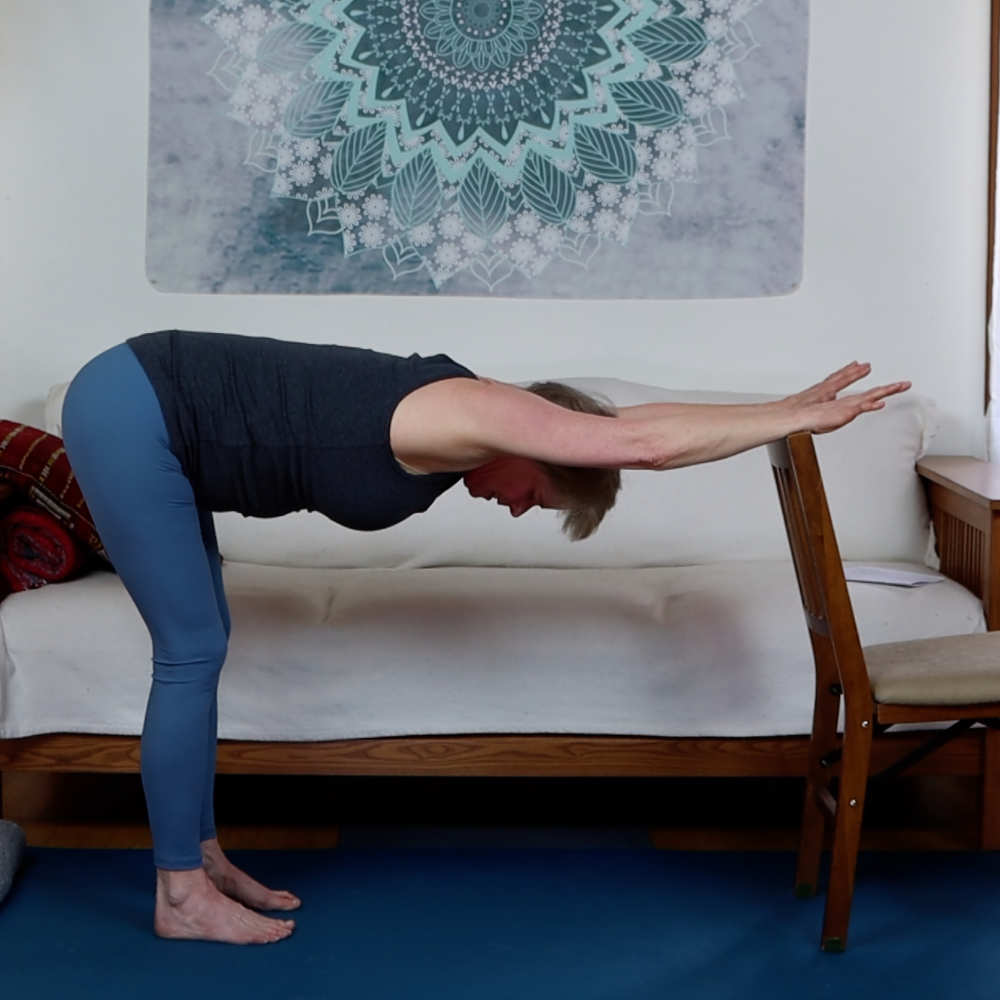
Downward Facing Dog has many benefits
- Its triangular structure makes it a very stable pose. When you find just the right balance and alignment, your sense of time will slip away while you enjoy the benefits of this semi-inversion.
- Strengthens shoulders, arms, wrists, and hands.
- Lengthens and relieves spinal pressure with semi-inversion.
- Stretches hamstrings, calves, and Achilles tendon.
- Increases blood flow to the brain to relieve headaches, mental fogginess, and stress.
In addition, the benefits of Downward Facing Dog carry over to help with strength and mobility for total hip replacement.
- The mindful positioning and movement of the leg bones in relation to the pelvis and the spine promotes hip mobility.
- The pose builds strength in buttocks and hip stabilizers as well as in the shoulders, arms and hands.
Try these variations if you are not yet ready for the full pose:
- Do Downward Dog using a chair or countertop. Perfect for if you are not yet ready to get down to the floor.
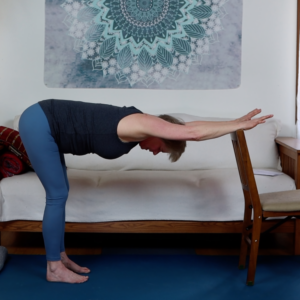
- Do Downward Dog on your knees. This variation builds mobility and strength in the arms and shoulders in preparation for the full pose.
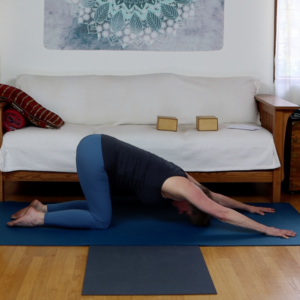
Additional variations on Downward Facing Dog
- While in Downward Dog try lifting one leg up and down and then practice the with the other. Start by lifting just a few inches off the floor to test how it feels. Keep your hips level and avoid shifting forward over your hands.
- While in Downward Dog try rising up and down on the balls of your feet. Avoid shifting forward over your hands.
- While in Downward Dog try lowering to your knees and back up again. Move slowly while maintaining a neutral spine and just barely touch the knees to the ground before going back up again. This builds core strength and awareness of spinal alignment.
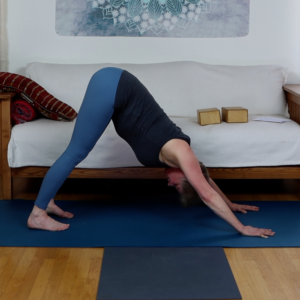
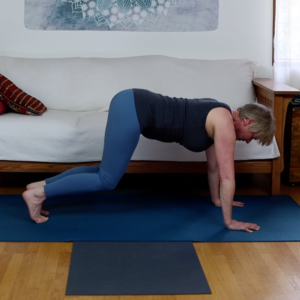
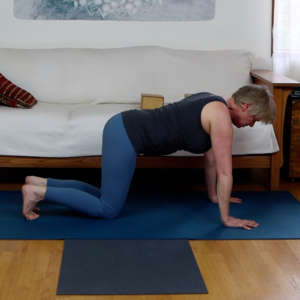
You can find detailed instruction in the video Downward Facing Dog / Adho Mukha Svanasana (find link below). As you experiment you might just find your own variation that works perfectly for you. I’d be happy to hear what you learn. You can comment below.
Here’s to healthy and happy hips!
Key Takeaways
- Downward Facing Dog is a stable, strengthening, and rejuvenating pose that offers whole-body benefits, especially helpful after total hip replacement (THR).
- Its triangular shape helps relieve spinal pressure, increase blood flow, and strengthen the upper body, while also stretching the hamstrings, calves, and feet.
- For those recovering from THR, Downward Dog promotes hip mobility and strengthens the glutes and hip stabilizers, key for joint support and improved function.
- You don’t have to get on the floor right away. Begin with variations using a chair or countertop, or try the pose on your knees to gently build strength and mobility.
- Explore gentle dynamic variations (lifting a leg, rising onto toes, or lowering knees) to build body awareness, control, and core strength, all while protecting your hips and spine.
Move slowly and mindfully, checking in with your body as you go. Alignment and ease come before depth.
Frequently Asked Questions (FAQs)
1. Is Downward Facing Dog safe after total hip replacement?
Yes, with modifications. Start with supported versions (like using a chair or keeping your knees down) and progress only as your strength, confidence, and comfort grow. Always listen to your body and follow your surgeon’s or physical therapist’s guidance.
2. What if I can’t get to the floor yet?
No problem! Try Downward Dog at the wall, with a countertop, or using a chair. These variations offer many of the same benefits while keeping you safely supported.
3. How does Downward Dog help my hips?
It promotes hip mobility through mindful alignment and builds strength in the glutes and hip stabilizers, which support your new joint and improve daily movement.
4. Can I still benefit from the pose without doing the full version?
Absolutely. The beauty of yoga lies in its adaptability. Even gentle variations of Downward Dog help build the foundation for strength, balance, and alignment.
5. What if my arms or shoulders get tired quickly?
That’s completely normal. Take breaks, and explore gentler versions like Downward Dog on your knees to build endurance gradually.
6. Are there any small movements I can do in the pose to increase benefits?
A: Yes! Try:
- Lifting one leg slightly (without shifting your hips)
- Rising onto the balls of your feet and lowering slowly
- Lowering your knees lightly and returning to the pose
These variations help with core engagement, body awareness, and coordination.
7. How do I know if I’m doing it right?
You should feel stable and supported, not strained. If your hands or back hurt, revisit your alignment or try a gentler variation. Trust how your body feels, not how the pose looks.
Talk to your surgeon or healthcare provider before beginning any athletic program.
Download PDF of informational flyer here
© 2024 Yoga for Hip Replacement | Privacy Policy | Terms of Use
